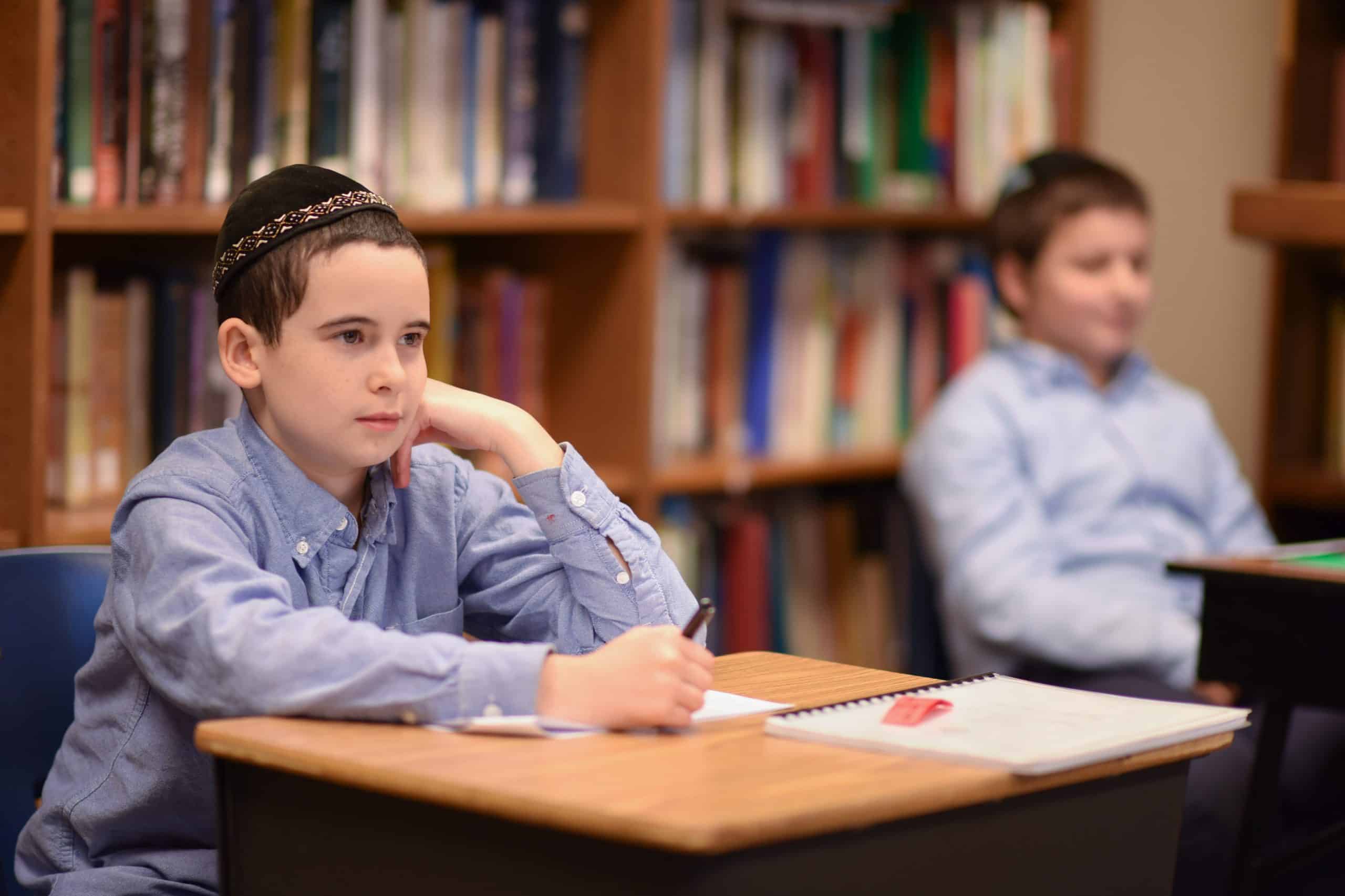Parshas Hashevuah: Aiming Higher
by Chanah Rose
Parsha. It’s a spiral that takes us higher each year, revisiting familiar stories on deeper levels, with new relevance for the new year. In schools, we need to make sure that Parsha class is indeed a spiral that cycles upwards, and not mainly repetition. Parsha is perhaps the only subject which is taught consistently from preK all the way up through high school, so it takes effort and intentionality to teach it each year in a way that’s new.
The first things to determine are our objectives for teaching Parsha, and the objectives themselves may change from year to year. However, even for those objectives that remain relevant in every grade, there are ways to deepen the learning and ensure that it is on grade level each year, challenging students and keeping them engaged in the sacred cycle of Parshas Hashavuah.
Yedias HaTorah
A primary objective for Parsha class is Yedias HaTorah. The weekly Parsha gives us a birds eye view of Chamisha Chumshai Torah, all in one year. It is through Parsha class that students become familiar with our Avos and Imahos, and with the stories of our nation’s birth. It is through Parsha that children learn about miracles and Middos, and get to know the rich tapestry of what it means to be a Jew.
Yedias Hatorah provides context for the more detailed learning and textual study that will take place throughout a student’s schooling. Furthermore, knowledge attracts knowledge, as newly learned facts have a greater context to fit into and prior knowledge with which to connect.
This is one of the differences between learning Parsha and Chumash, where skill building and depth over information and breadth become greater priorities. However, the Zekelman Standards for Chumash have an entire standard area dedicated to Yedias HaTorah alone – Standard 2, Content. This standard can be borrowed for Parsha class in order to ensure a systematic progression in the Yedios that students acquire.
The content standard is divided into Concrete Knowledge – people, places, events and לשונות – and Conceptual Knowledge – terms and concepts, and מצוות / הוראות. These are all categories that we naturally adress in our Parsha classes, but the key is to ensure that we continue to progress in each category. For example, “The Little Midrash Says” is a vital resource, but once we have taught from it in lower grades (and especially once students can read it on their own), we need to challenge ourselves to go deeper and wider each year. The standards suggest guidelines for doing so.
Textual Learning
In the older grades, as Yedios become more ingrained, teachers may choose to take another approach to Parsha. Students may now have the skills for textual learning, and showing students how the stories they’ve learned for so long are sourced in the text can be a great way to take Parsha class to another level.
In the Shluchim Online School, Mrs. Gitty Rosenfeld spearheaded a Parsha curriculum in which every grade had Pesukim designated for the students to see inside. In first grade, it might just be basic exposure to one Posuk, but in the upper grades there is much more opportunity for students to experience the Lashon HaTorah of the stories they know so well. The selection of Pesukim can include ones that have become famous and often quoted, to Pesukim which are pivotal in the storyline. Whether the teacher is reading and translating the Posuk, or students are preparing it on their own, the potential for learning becomes so much greater when we use Hashem’s own words in telling the story.
Moving on in the grades, students can be exposed to a selection of Meforshim on the Parsha, with skills appropriately scaffolded at each grade level. In the Bais Yaakov High School that I attended, the Parsha teacher, Rebbetzin Paretzky (also the beloved principal of many years) had us prepare the Parsha for homework before walking into Parsha class. We were to read through the Parsha on our own, and make note of the Roshei Prakim to hand in. In this way, she could share her wealth of Meforshim and insights to a class that already knew what was going on in the Parsha, at the same time reinforcing age appropriate textual skills (and prepping us for Chitas!).
Living with the Times
A final and vital objective of teaching the Parsha indeed applies equally at every age, on into adulthood. The Alter Rebbe instructed us to “live with the times,” meaning the lessons of each Parsha, and the Rebbe further emphasized to us the Torah is “milashon Horaah,” and its primary purpose is to instruct us in our lives and Avodas Hashem. From preK to post high school, the living lessons of each Parsha are deservedly a primary focus of a Parsha lesson.
Again, the task of a teacher for this objective is to ensure that there is age appropriate progression in uncovering the Horaos each week. There are two ways in which to do so: 1) the horaah itself and 2) the way in which it is taught.
Let’s take Avraham Avinu’s Hachnasas Orchim in Parshas Vayeira. Students learn this at a young age, with the unforgettable visual of a tent with four doors, and other wonderful teaching tools. As students get older, we can do one or both of the following: We can look for other Horaos in Parshas Vayeira to teach, such as Sara Imeinu’s Tznius or our Emuna in Hashem as Kol Yachol. Or, we can advance the way in which we teach the Horaah:
- Firstly, exploring it through different modalities of role play, art etc. helps connect different parts of students’ lives and creativity to the learning. The Chabad Early Childhood Education Network’s Parsha curriculum by Mrs. Chanie Feldman does this beautifully, incorporating a variety of skills into each Parsha in the spirit of “Hafoch bah v’hafoch bah d’chola bah.”
- Secondly, as children’s critical thinking skills blossom and grow, they can be asked to analyze and apply the Horaah in different ways to make it more meaningful: Was Hachnosas Orchim easy or challenging for Avraham Avinu, and why do you think so? When were you in your own life faced with a Hachnosis Orchim challenge similar to the one in this Parsha? How does Avraham Avinu’s Hachnosas Orchim compare to his nephew Lot’s? And so on.
- Finally, as students grow they should increasingly be provided with opportunities to uncover Horaos on their own. Finding a Horaah, even a known one, in the Pesukim or narrative makes it much more meaningful than being told about it. Also, the Horaos that can be drawn from Torah are infinite in number and can be deeply personal, reflecting a student’s personality and what might be going on in their lives. When encouraging students to share their own Horaos, require them to trace the lessons to the words or events of the Pesukim to keep the learning grounded in our sources.
How the students record their Horaos also helps encouraging the learning, through a journal (here’s a template to help students out), drama, or carefully facilitated classroom discussion. “Hamaaseh hu haikar” – see if you can find ways to actualize the learning by having students implement the lessons that they learn. For younger children, this can mean asking for a Mitzvah note on that specific topic, or a motivational chart. For older students, the class can implement or lead Chesed or other campaigns related to the learning.
How Do You Aim Higher?
Whatever the method, as Mechanchim and Mechanchos we have the special privilege of introducing our students to the ongoing cycle of Parshas Hashavuah, which we hope they remain connected to in an ever increasing way after they leave our classroom. Through gathering Yedios about our precious heritage, gaining and reinforcing the skills for independent learning, and gleaning the life lessons the Torah provides, we can ensure that our students are always growing in their learning and gain a taste for the infinite depths of Torah.
What method do you use to ensure age appropriate growth in your Parsha lessons? Please share for a chance to be included in a future post, so that other teachers and students can benefit! Email us at info@mymef.org, subject line “Parsha.”





